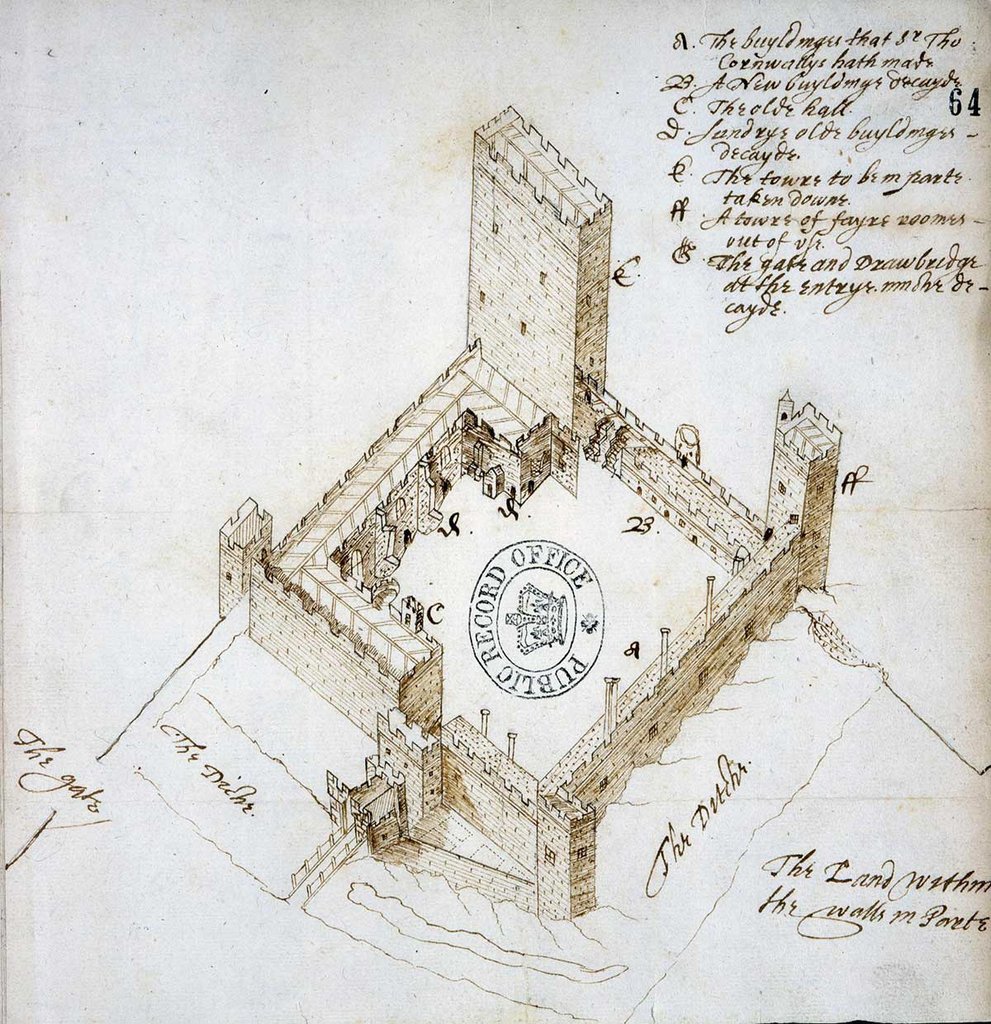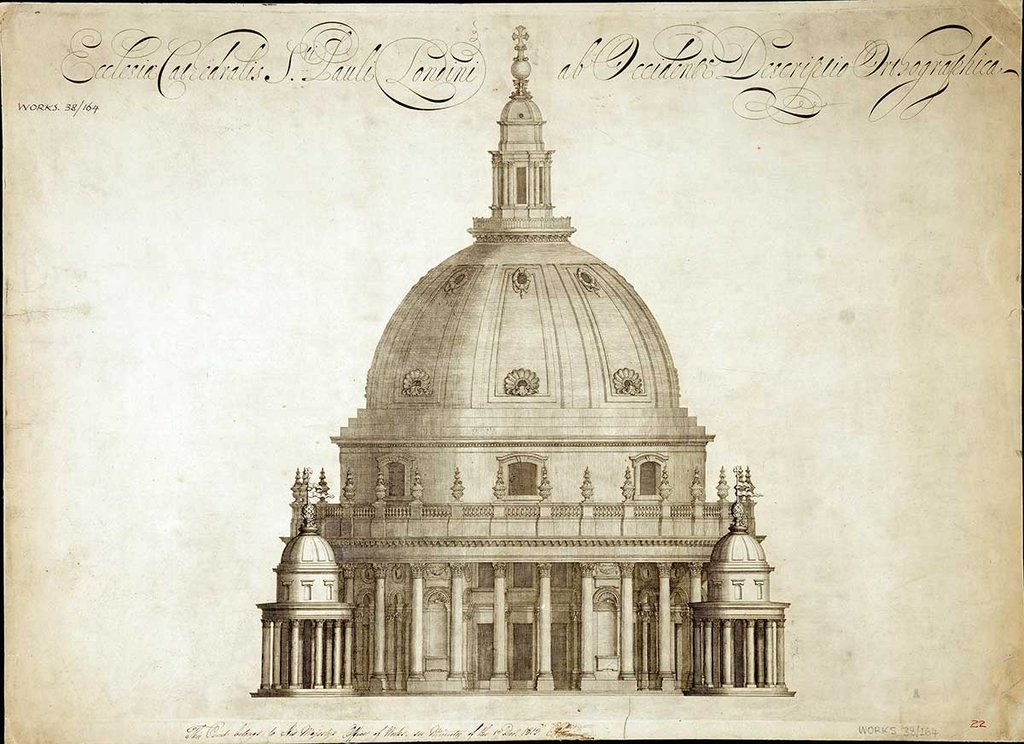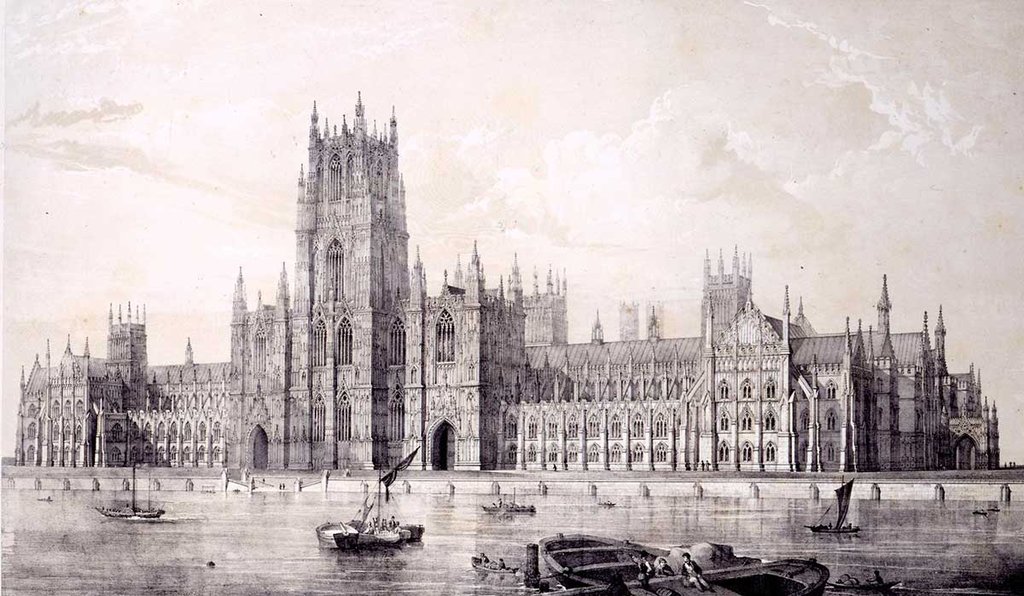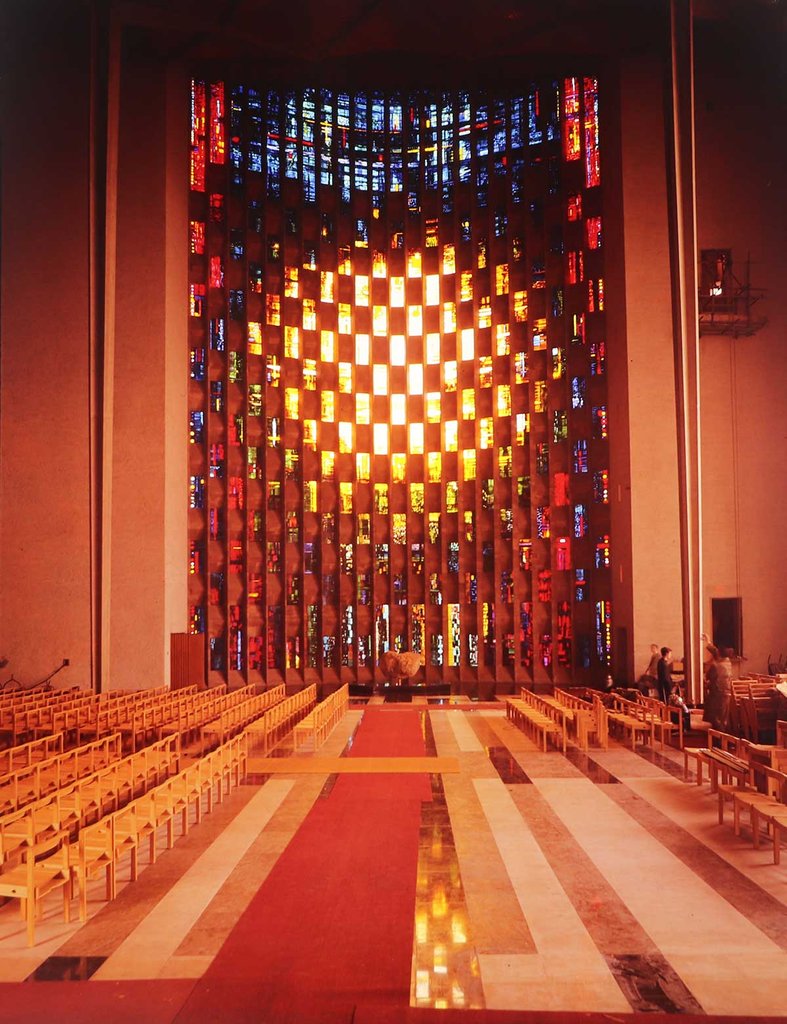Architecture
Our architectural records cover many public buildings, from the Houses of Parliament and Whitehall offices to castles and cathedrals.
Portchester Castle, bird’s eye view
Date: 1609
Catalogue reference: View the record N/A in the catalogue
In 1601 Queen Elizabeth I was entertained at Portchester Castle, near Fareham in Hampshire. Hopefully it was in a better state then than it was eight years later, as seen in this 1609 drawing by John Norden, best known for his county maps.
Norden was also a surveyor of royal forts, and made this bird’s-eye view carefully labelled to show that he found it ‘very ruynous’ [ruinous] and ‘decayde’ [decayed], as the lead had been taken from the roof.
By this point Portchester had lost her previous strategic importance because the main harbour at Portsmouth had developed, and Norden’s proposed repairs were not funded.

St Paul’s Cathedral, London, elevation
Date: 1702
Catalogue reference: View the record N/A in the catalogue
This elevation of St Paul's Cathedral in London, showing the drum, dome and towers from the west side, was engraved by Simon Gribelin in 1702. It may have been intended for a book about the architecture of Sir Christopher Wren, who was Surveyor General of work on this church.
This was an early design, which is different from the actual work carried out. The original of this particular drawing may have been by Nicholas Hawksmoor, who worked for Wren and went on to design a number of London churches.
This drawing comes from the large collections of the Ministry of Works, relating to government and public buildings over hundreds of years.

Houses of Parliament competition drawing
Date: 1835
Catalogue reference: View the record N/A in the catalogue
After a fire destroyed the Houses of Parliament and other buildings in Westminster in 1834, a Royal Commission was appointed to begin the rebuilding of the site. In 1835, it launched a public competition to find a new design for the Palace of Westminster.
Although the popular style for buildings at the time was neo-classical architecture, the commission decided the Palace should be in either a Gothic or Elizabethan style, which was felt to be more in keeping with conservative political values.
This is one of the designs submitted for the competition and shows how the Houses of Parliament might have looked. It was submitted by William Railton (1800–1877), best known for his design of Nelson’s Column.
Charles Barry (1795–1860) was ultimately chosen as the winner of the competition to redesign the Palace and carried out the work with the assistance of Augustus Welby Pugin (1812–1852).

Coventry Cathedral baptistry window, transparency
Date: April 1962
Catalogue reference: View the record N/A in the catalogue
Coventry was the target of a German air raid in the Second World War in which the medieval cathedral church of St Michael's was destroyed. After the war, a new cathedral was built alongside the ruins of the old building.
The new cathedral was designed by Sir Basil Spence (1907–1976), with works commissioned by artists, including the stained-glass Baptistry Window, pictured in this slide, designed by John Piper (1903–1992) and made by glassmaker Patrick Reyntiens.
This transparency is part of a collection showing photographs of views of the new Coventry Cathedral held by the Central Office of Information's publicity division.
